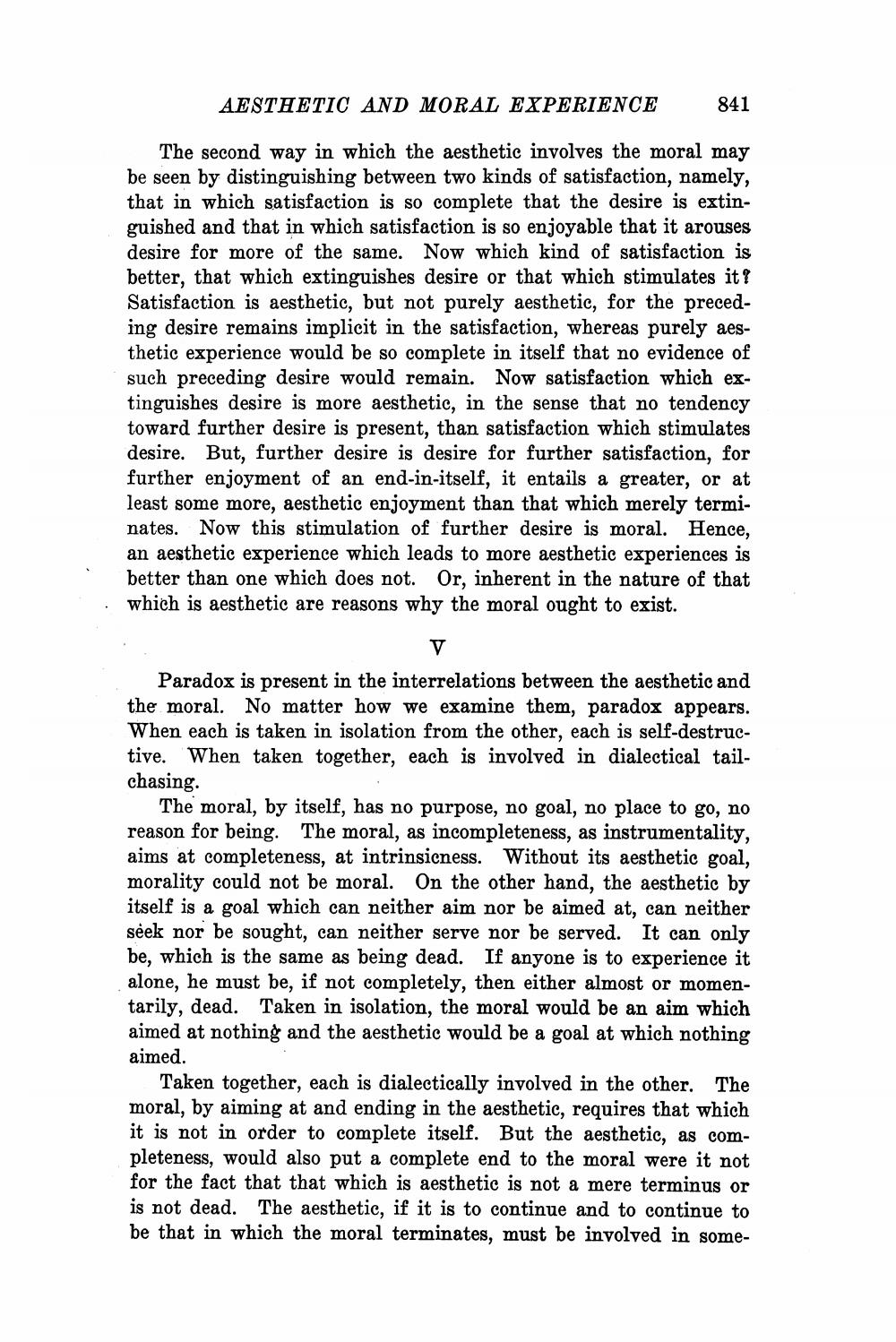Book Title: Three Essays On Aesthetics Author(s): Archie J Bahm Publisher: Archie J Bahm View full book textPage 5
________________ AESTHETIC AND MORAL EXPERIENCE 841 The second way in which the aesthetic involves the moral may be seen by distinguishing between two kinds of satisfaction, namely, that in which satisfaction is so complete that the desire is extinguished and that in which satisfaction is so enjoyable that it arouses desire for more of the same. Now which kind of satisfaction is better, that which extinguishes desire or that which stimulates it? Satisfaction is aesthetic, but not purely aesthetic, for the preceding desire remains implicit in the satisfaction, whereas purely aesthetic experience would be so complete in itself that no evidence of such preceding desire would remain. Now satisfaction which extinguishes desire is more aesthetic, in the sense that no tendency toward further desire is present, than satisfaction which stimulates desire. But, further desire is desire for further satisfaction, for further enjoyment of an end-in-itself, it entails a greater, or at least some more, aesthetic enjoyment than that which merely terminates. Now this stimulation of further desire is moral. Hence, an aesthetic experience which leads to more aesthetic experiences is better than one which does not. Or, inherent in the nature of that · which is aesthetic are reasons why the moral ought to exist. V Paradox is present in the interrelations between the aesthetic and the moral. No matter how we examine them, paradox appears. When each is taken in isolation from the other, each is self-destructive. When taken together, each is involved in dialectical tailchasing. The moral, by itself, has no purpose, no goal, no place to go, no reason for being. The moral, as incompleteness, as instrumentality, aims at completeness, at intrinsicness. Without its aesthetic goal, morality could not be moral. On the other hand, the aesthetic by itself is a goal which can neither aim nor be aimed at, can neither sèek nor be sought, can neither serve nor be served. It can only be, which is the same as being dead. If anyone is to experience it alone, he must be, if not completely, then either almost or momentarily, dead. Taken in isolation, the moral would be an aim which aimed at nothing and the aesthetic would be a goal at which nothing aimed. Taken together, each is dialectically involved in the other. The moral, by aiming at and ending in the aesthetic, requires that which it is not in order to complete itself. But the aesthetic, as completeness, would also put a complete end to the moral were it not for the fact that that which is aesthetic is not a mere terminus or is not dead. The aesthetic, if it is to continue and to continue to be that in which the moral terminates, must be involved in somePage Navigation
1 ... 3 4 5 6 7 8 9 10 11 12 13 14 15 16 17 18 19 20 21 22 23 24 25 26 27 28 29 30 31 32
